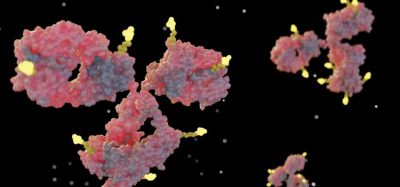ViiV Healthcare announces U.S. approval of Tivicay® (dolutegravir) for the treatment of HIV-1
Posted: 12 August 2013 | ViiV Healthcare | No comments yet
ViiV Healthcare is pleased to announce that the U.S. FDA has approved Tivicay® (dolutegravir) 50-mg tablets…
ViiV Healthcare is pleased to announce today that the U.S. Food and Drug Administration (FDA) has approved Tivicay® (dolutegravir) 50-mg tablets. Tivicay is an integrase inhibitor indicated for use in combination with other antiretroviral agents for the treatment of HIV-1 in adults and children aged 12 years and older weighing at least 40 kg (approx. 88 lbs).
“Today is a very important milestone for patients and the scientists and teams who developed Tivicay and brought it to this point of FDA approval. I am very proud that we are serving people living with HIV with a much-needed new treatment option. Today’s approval shows that our singular focus on HIV can deliver important new medicines, maintaining our absolute commitment to the HIV/AIDS global response,” said Dr Dominique Limet, Chief Executive Officer, ViiV Healthcare.
The submission included data from four pivotal Phase III clinical trials that treated 2,557 adults (who received at least one dose of study medication) with HIV across the treatment spectrum; it also included data in children aged 12 years and older. Tivicay was used without a pharmacokinetic boosting agent. Tivicay can be taken with or without food and at any time of the day.
“In many regimens, the differentiating component is the third agent. Tivicay provides a new opportunity for healthcare professionals to choose the right regimen for their patients, providing a focal point around which to individualise therapy,” said Dr John Pottage, Chief Medical Officer, ViiV Healthcare. “HIV treatment should not be a ‘one-size fits all’ paradigm.”
This wide-ranging Phase III programme included two trials in treatment-naïve patients: one where a once-daily Tivicay-based regimen was compared to twice-daily raltegravir and another where the regimen of once-daily Tivicay and abacavir/lamivudine was compared to once-daily Atripla®[1] (efavirenz/emtricitabine/tenofovir disoproxil fumarate). It also included treatment-experienced patients who had not previously been treated with an integrase inhibitor, where a once-daily, Tivicay-based regimen was compared to twice-daily raltegravir. The fourth trial studied treatment-experienced patients with resistance to multiple classes of HIV medicines, including resistance to integrase inhibitors, where the effectiveness of twice-daily Tivicay on viral load was evaluated.
About the Phase III Clinical Trial Programme
SPRING-2 was a study evaluating once-daily Tivicay versus twice-daily raltegravir in 822 HIV-infected, treatment-naïve patients, in each case in combination with a fixed-dose dual-NRTI treatment. At week 48, the proportion of study participants who were virologically suppressed (HIV-1 RNA <50 c/mL) was 88% for the regimen containing Tivicay and 86% for the regimen containing raltegravir, meeting the 10% non-inferiority criteria. The tolerability of Tivicay was similar to that of raltegravir, with adverse events leading to withdrawal at 2% in both arms. There were no treatment-emergent adverse drug reactions of at least moderate intensity (Grades 2 to 4) and ≥2% frequency in the Tivicay or raltegravir arms in SPRING-2.
No treatment-emergent genotypic resistance to Tivicay or the background regimen was seen in the Tivicay arm in SPRING-2.
SINGLE was a study evaluating once-daily Tivicay plus abacavir/lamivudine versus the single tablet regimen Atripla in 833 HIV-infected, treatment-naïve patients. At 48 weeks, the proportion of study participants who were virologically suppressed (HIV-1 RNA <50 c/mL) was 88% for the Tivicay regimen and 81% for Atripla. This difference was statistically significant. Overall, 2% of subjects on the Tivicay-based regimen discontinued due to adverse events versus 10% of those receiving the Atripla regimen.
For Tivicay, treatment-emergent adverse drug reactions of at least moderate intensity (Grades 2 to 4) and ≥2% frequency in SINGLE were insomnia (3%) and headache (2%). Treatment-emergent adverse drug reactions of at least moderate intensity (Grades 2 to 4) and ≥2% frequency for Atripla were rash (6%), dizziness (5%), nausea (3%), and insomnia, abnormal dreams, headache, diarrhoea, and vertigo (2%).
No treatment-emergent genotypic resistance that resulted in reduced susceptibility to either Tivicay or the background regimen was seen in the Tivicay arm in SINGLE.
SAILING was a study evaluating once-daily Tivicay versus twice-daily raltegravir in 719 patients with HIV who were failing on current therapy, but had not been treated with an integrase inhibitor, in each case in combination with an investigator-selected background regimen consisting of up to two agents, including at least one fully active agent. At week 24, 79% of patients on the regimen containing Tivicay were virologically suppressed (HIV-1 RNA <50 c/mL) versus 70% of patients on the regimen containing raltegravir. This difference was statistically significant. Overall, the tolerability of Tivicay was similar to that of raltegravir, with adverse events leading to withdrawal at 2% for the Tivicay regimen versus 4% for the raltegravir regimen. There were no treatment-emergent adverse drug reactions of at least moderate intensity (Grades 2 to 4) and ≥2% frequency in the Tivicay arm. The only treatment-emergent adverse drug reaction of at least moderate intensity (Grades 2 to 4) and ≥2% frequency in the raltegravir arm was diarrhoea (2%). Viruses from five of 15 subjects in the Tivicay arm with post-baseline resistance data had evidence of treatment-emergent genetic changes (integrase substitutions). However, none of these patients had decreases in susceptibility to either Tivicay or raltegravir.
VIKING-3 was a study evaluating twice-daily Tivicay in 183 HIV-infected adults currently on medication whose HIV was resistant to multiple classes of HIV medicines, including integrase inhibitors (raltegravir and/or elvitegravir). In the study, mean HIV RNA levels declined by 1.4 log10 c/mL after seven days of treatment with the addition of Tivicay to their background regimen. The proportion of study participants who were subsequently virologically suppressed (HIV-1 RNA <50 c/mL) with the addition of Tivicay to their background regimen was 63% at week 24. However, poor virologic response was observed in subjects treated with Tivicay twice daily with an integrase strand transfer inhibitor (INSTI) resistance called Q148 plus two or more additional INSTI resistance substitutions. The rate of adverse events leading to discontinuation was 3% of subjects at week 24. Treatment-emergent adverse drug reactions in VIKING-3 were generally similar compared with observations with the once-daily, 50-mg dose in Phase III trials of adult patients.
The indication in children aged 12 years and older and weighing at least 40 kg (88 lbs) is based on an evaluation of safety, pharmacokinetics, and efficacy through 24 weeks in a multi-centre, open-label trial in patients who have not previously been treated with integrase inhibitors.
“As HIV has become a chronic disease, and people now are living for a long time with the disease, we know that new medicines will always be needed. At ViiV Healthcare we listen to patients and physicians to truly understand the unmet needs in HIV. Today’s approval of Tivicay is the first medicine from the ViiV Healthcare pipeline, and I look forward to seeing the future developments of our HIV science,” said Dr John Pottage, Chief Medical Officer, ViiV Healthcare.
Important Safety Information for Tivicay
Contraindication: Co-administration of TIVICAY with dofetilide (anti-arrhythmic) is contraindicated due to the potential for increased dofetilide plasma concentrations and the risk for serious and/or life-threatening events.
Hypersensitivity Reactions: Hypersensitivity reactions have been reported and were characterised by rash, constitutional findings, and sometimes organ dysfunction, including liver injury. The events were reported in 1% or fewer subjects receiving TIVICAY in Phase 3 clinical trials. Immediately discontinue TIVICAY and other suspect agents if signs or symptoms of hypersensitivity reaction develop, (including but not limited to, severe rash or rash accompanied by fever, general malaise, fatigue, muscle or joint aches, blisters or peeling of the skin, oral blisters or lesions, conjunctivitis, facial edema, hepatitis, eosinophilia, angioedema, difficulty breathing.) Monitor clinical status, including liver aminotransferases, and initiate appropriate therapy. Delay in stopping treatment with TIVICAY or other suspect agents after the onset of hypersensitivity may result in a life-threatening reaction. TIVICAY should not be used in patients who have experienced a hypersensitivity reaction to TIVICAY.
Effects on Serum Liver Biochemistries in Patients with Hepatitis B or C Coinfection: Patients with underlying hepatitis B or C may be at increased risk for worsening or development of transaminase elevations with use of TIVICAY. In some cases the elevations in transaminases were consistent with immune reconstitution syndrome or hepatitis B reactivation particularly in the setting where anti-hepatitis therapy was withdrawn. Appropriate laboratory testing prior to initiating therapy and monitoring for hepatotoxicity during therapy with TIVICAY are recommended in patients with underlying hepatic disease such as hepatitis B or C.
Fat Redistribution: Redistribution/accumulation of body fat has been observed in patients receiving antiretroviral therapy.
Immune Reconstitution Syndrome: During the initial phase of treatment, immune reconstitution syndrome can occur, which may necessitate further evaluation and treatment. Autoimmune disorders have been reported to occur in the setting of immune reconstitution; the time to onset is more variable and can occur many months after initiation of treatment.
Adverse Reactions: The most commonly reported (≥2%) adverse reactions of moderate to severe intensity in treatment naïve adult subjects in any one trial receiving TIVICAY in a combination regimen were insomnia (3%) and headache (2%).
Drug Interactions: Co-administration of TIVICAY with drugs that are strong inducers of UGT1A1 and/or CYP3A4 may result in reduced plasma concentrations of dolutegravir and require dose adjustments of TIVICAY.
-TIVICAY should be taken 2 hours before or 6 hours after taking cation-containing antacids or laxatives, sucralfate, oral iron supplements, oral calcium supplements, or buffered medications.
-Consult the full Prescribing Information for TIVICAY for more information on potentially significant drug interactions, including clinical comments.
Pregnancy: Pregnancy category B. TIVICAY should be used during pregnancy only if the potential benefit justifies the potential risk. An Antiretroviral Pregnancy Registry has been established.
Breastfeeding: Breastfeeding is NOT recommended due to the potential for HIV transmission and the potential for adverse reactions in nursing infants.
Paediatric Patients: Safety and efficacy of TIVICAY has not been established in children younger than 12 years old, or weighing <40 kg, or in INSTI-experienced paediatric patients with documented or clinically suspected INSTI resistance.
Please visit the following link for the full U.S. prescribing and patient information: https://www.viivhealthcare.com/media/58599/us_tivicay.pdf.
About Tivicay® (dolutegravir)
Tivicay is an integrase inhibitor indicated for use in combination with other antiretroviral agents for the treatment of HIV-1 in adults and children aged 12 years and older weighing at least 40 kg. Integrase inhibitors block HIV replication by preventing the viral DNA from integrating into the genetic material of human immune cells (T-cells). This step is essential in the HIV replication cycle and is also responsible for establishing chronic infection.
It is available as a small, yellow, 50-mg tablet. Importantly, it can be taken with or without food and at any time of the day. Tivicay will be available in pharmacies approximately two weeks after today’s announcement.
ViiV Healthcare announced submission of a Marketing Authorisation Application (MAA) for dolutegravir to the European Medicines Agency (EMA) on 17 December 2012. Regulatory applications are also being evaluated in other markets worldwide, including Canada, Australia, and Brazil. Submission of regulatory files to support a fixed-dose combination of Tivicay and abacavir/lamivudine is anticipated in 2013.
Tivicay is the first new treatment delivered by ViiV Healthcare.
Reference
- Atripla is a registered trademark of Bristol-Myers Squibb and Gilead Sciences, LLC.









